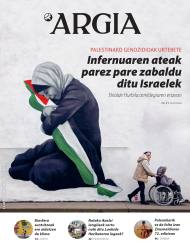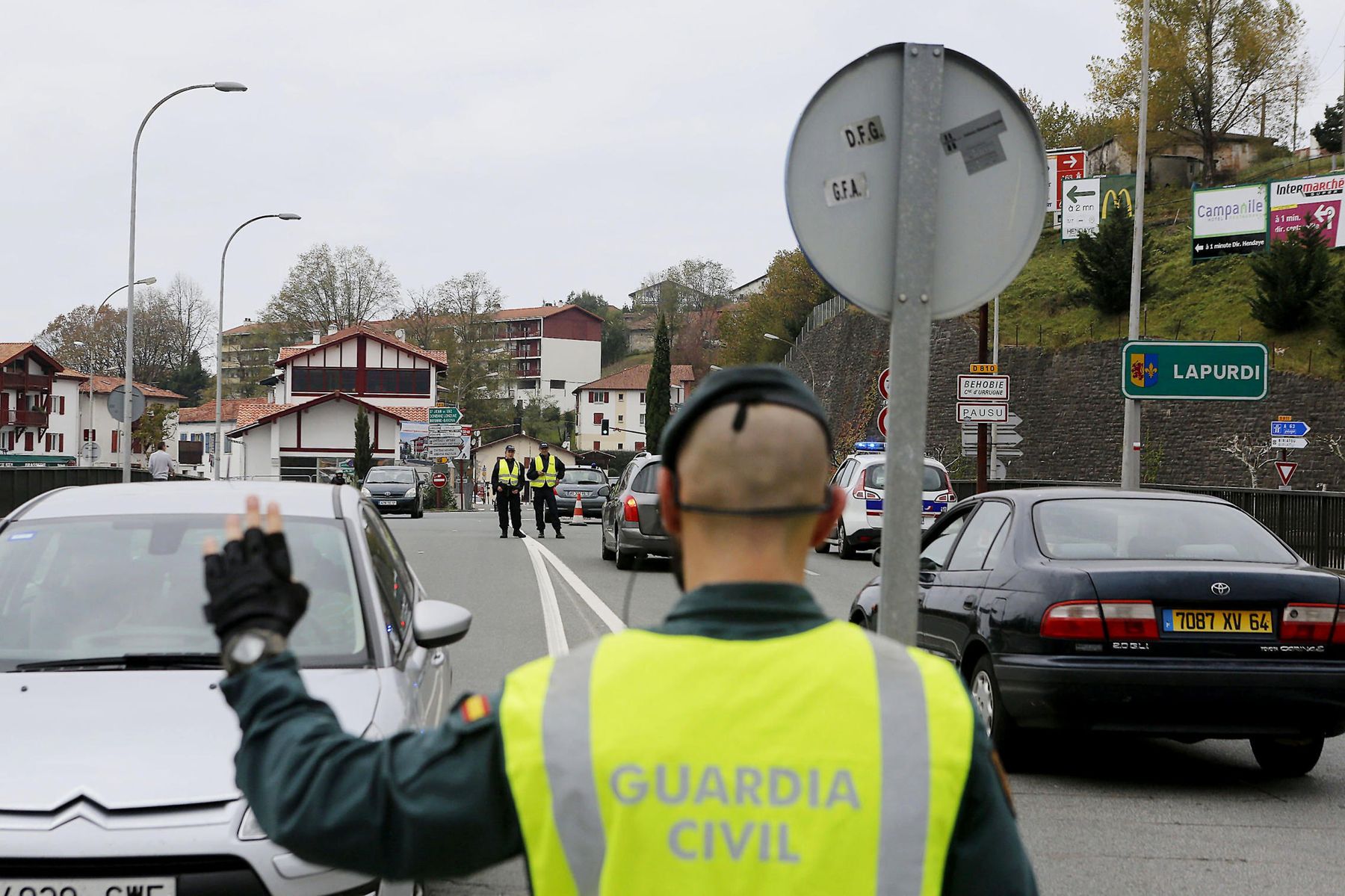Swallows always come back

Maule, 1892. Eight women from the Salazar Valley headed home from the capital of Zuberoa, but on the way, in Larrain, they were shocked by the snow and all were killed by the cold. Of the eight, seven names have come: Felicia Juanko, Felipce Landa, Dolores Arbe, Justa Larrea, Felipa García, Agapita Sirón and Francisca Narbaiz.
These eight girls were “swallows” or “ainaras”, young women from the valleys of Roncal, Salazar and Ansó de Aragón, who each year between 1850 and 1930 traveled the road from one side to the other of the Pyrenees, to spend the winter in the factories of alpargatas of Maule and its surroundings. They would leave, like swallows, in the fall, in October, and in the spring, they would go home towards May.
But these eight girls, apparently, tried in the middle of the winter to go home and didn't achieve the goal. The press on both sides of the border was informed of what happened. The journal Escualduna, on February 2, 1892, expressed its misfortune:
“In the last episode of the disease and snowfall, a great disgrace has occurred beyond Larrañaga. From the first hour of the morning, eight young Spanish girls have inflated their pants in the boya and the joy in the heart from Maoule, and they have gone etcheat, Spalat”. But the snow fell on their way: “The gargoyle begins to cloud, as I have never done myself, like a sweet ichousi, inside a hachis nu blessing five. There the girls have gone crazy, not in front, not in the back. He took colds and killed them. The heart of the six was already in the sky, full of clouds. What have the other two done? Gaicho girls!”
Four or five years ago, the president of the Salazar Board, Gustavo Goiena, Jone Villanueva, Ritxi Lizartza and others, after reading the news on the case, decided to investigate the matter further. Many others helped in this effort: Patxi Iriarte, Xabier Diaz, Elena Gusano, Dominique Hastoy, Joël Larroque… But in vain. They didn't even get to know what the countries of origin of the girls were.
But they realized that most sources did not doubt what they had gathered in the press at the time, which they considered the death of eight of them to be true. In addition, they observed that the event was associated with the origin of the dance: the girls start dancing caught by hand, held by hand, representing the swallows that died of cold. They went to José Antonio Urbeltz, the choreographer, to ask them about it, but he told them there was no connection.
It is true that at first the eight were declared dead, but all managed to return healthy and saved to their people of origin. A person has died in the Larraine area after leaving Maule, when they were on their way to Santiago de Compostela. The data was confused and the traumatic news spread quickly.
Municipality in Le Réveil Basque
In the end, in March of this year, Ritxi Lizartza found a news from the bilingual weekly Le Réveil Basque that demented the beliefs that had existed until then. It is true that at first the eight were declared dead, but all managed to return healthy and saved to their people of origin. A person has died in the Larraine area after leaving Maule, when they were on their way to Santiago de Compostela. The data was confused and the traumatic news spread at full speed.
Researchers have also found the origin of some of the swallows: Agapita was from Izalzu, Felipce Landa de Esparza, and Dolores Arbe, Justa Larrea and Felipa García de Ochagavía. The finding has been published in the August issue of the journal Mendixut del Pirineo Navarro, and, in addition to highlighting that they still have something to investigate, they have made the following reflection: “It is perfectly lawful and necessary to dramatize, idealize or poletize some facts and stories to give character to a community. But being always aware of which of those stories are based on real facts.”
What happened with Eighth makes it clear that fake news is not a matter for today and, above all, the unfortunate cases that highlight the vulnerability of women are spreading very easily.
Kirola eta oroimena uztartuko dituzte, bigarrenez, mendi-martxa baten bitartez. Ez da lehiakorra izanen, helburua beste bat delako. La Fuga izeneko mendi martxak 1938ko sarraskia gogorarazi nahi du. Ezkabako gotorlekuan hasi eta Urepelen amaituko da. Maiatzaren 17an eginen dute.
Bilbo, 1954. Hiriko Alfer eta Gaizkileen Auzitegia homosexualen aurka jazartzen hasi zen, erregimen frankistak izen bereko legea (Ley de Vagos y Maleantes, 1933) espresuki horretarako egokitu ondoren. Frankismoak homosexualen aurka egiten zuen lehenago ere, eta 1970ean legea... [+]
Fusilamenduak, elektrodoak eta poltsa, hobi komunak, kolpismoa, jazarpena, drogak, Galindo, umiliazioak, gerra zikina, Intxaurrondo, narkotrafikoa, estoldak, hizkuntza inposaketa, Altsasu, inpunitatea… Guardia Zibilaren lorratza iluna da Euskal Herrian, baita Espainiako... [+]
Deportazioaren Memoriarako Euskal Koordinakundeak aintzat hartu nahi ditu Hego Euskal Herrian jaio eta bizi ziren, eta 1940tik 1945era Bigarren Mundu Gerra zela eta deportazioa pairatu zuten herritarrak. Anton Gandarias Lekuona izango da haren lehendakaria, 1945ean naziek... [+]
Guardia Zibilaren historia bat - Hemendik alde egiteko arrazoiak izenburupean, datorren astean argitaratuko dugun 305. LARRUN aldizkariaren pasarte batzuk dira ondorengoak, erakunde armatuaren sorrera garaietan girotutakoak.
Iazko uztailean, ARGIAren 2.880. zenbakiko orrialdeotan genuen Bego Ariznabarreta Orbea. Bere aitaren gudaritzaz ari zen, eta 1936ko Gerra Zibilean lagun egindako Aking Chan, Xangai brigadista txinatarraz ere mintzatu zitzaigun. Oraindik orain, berriz, Gasteizen hartu ditu... [+]
Eskultura grekoerromatarrek bere garaian zuten itxurak ez du zerikusirik gaurkoarekin. Erabilitako materiala ez zuten bistan uzten. Orain badakigu kolore biziz margotzen zituztela eta jantziak eta apaingarriak ere eransten zizkietela. Bada, Cecilie Brøns Harvard... [+]
Japonia, XV. mendea. Espioitzan eta hilketa ezkutuetan espezializatutako eliteko talde militarra sortu zen. Edo horixe uste du behintzat Stephen Turnbull historialari britainiarrak. Beste aditu batzuen ustez, askoz lehenago sortu ziren ninjak, duela 2.300-2.500 urte inguru. Eta... [+]
Aranzadi Zientzia Elkarteko Etnografia Sailaren zuzendari berria da Maite Errarte Zurutuza (Beasain, 1995), urrian Fermin Leizaolaren lekukoa hartu ondoren. Kultura materiala aztertzen jarraitzeko beharra azpimarratu du, gizartearen memoria eta bizimodu aldaketak erregistratzeko... [+]
Gogora Institutuak 1936ko Gerrako biktimen inguruan egindako txostenean "erreketeak, falangistak, Kondor Legioko hegazkinlari alemaniar naziak eta faxista italiarrak" ageri direla salatu du Intxorta 1937 elkarteak, eta izen horiek kentzeko eskatu du. Maria Jesus San Jose... [+]
Familiak eskatu bezala, aurten Angel oroitzeko ekitaldia lore-eskaintza txiki bat izan da, Martin Azpilikueta kalean oroitarazten duen plakaren ondoan. 21 urte geroago, Angel jada biktima-estatus ofizialarekin gogoratzen dute.
Atapuercako aztarnategian hominido zahar baten aurpegi-hezur zatiak aurkitu dituzte. Homo affinis erectus bezala sailkatu dute giza-espezieen artean, eta gure arbasoek Afrikatik kanpora egindako lehen migrazioei buruzko teoriak irauli ditzake, adituen arabera.
Chão de Lamas-eko zilarrezko objektu sorta 1913an topatu zuten Coimbran (Portugal). Objektu horien artean zeltiar jatorriko zilarrezko bi ilargi zeuden. Bi ilargiak apaingarri hutsak zirela uste izan dute orain arte. Baina, berriki, adituek ilargietan egin zituzten motibo... [+]























